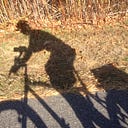Charles Hobson, Bed-Stuy, the Orioles and r-e-s-p-e-c-t
When I met Charles Hobson, he was selling rugs and looking to help get some respect for black culture.
I’m not sure how it worked out with the rugs. But by the time Charles Hobson died Feb. 13, at the age of 83, he had produced hundreds of radio and TV programs that captured a vibrant, underexposed culture.
In the late 1960s, when many readers and viewers assumed the predominantly black Bedford-Stuyvesant section of Brooklyn was a free-fire war zone, Hobson produced a series titled Inside Bedford Stuyvesant for New York’s WNEW-TV.
Inside Bedford Stuyvesant shocked some viewers because it was so un-shocking. While Hobson spotlighted a few guests with militant views, like Julius Lester, most of the 52 episodes showed a community with well-tended homes, clean parks, places to shop and vibrant churches.
Hobson wasn’t myopic. He acknowledged that Bed-Stuy, like every other neighborhood in the city, had problem areas. He also noted that being regarded as scary by so many white folks didn’t make things easier.
In the larger picture, that sort of blanket dismissal also made it harder to sell a show about Bed-Stuy, or any of a hundred other black communities — especially when there were almost no black faces in rooms where those calls were made.
At a time when the evolving civil rights movement was right up there with the Vietnam War in the American consciousness, few if any shows ventured into black communities.
And okay, today most still don’t.
Inside Bedford-Stuyvesant came to be hailed as an invaluable snapshot of a community at a crucial time, and Hobson later became the first black producer at Like It Is on New York’s WABC-TV.
For years, Like It Is was pretty much the only local TV forum for black community views, leading New York black radio figures like Bob Law and Imhotep Gary Byrd to lament that the community’s views and achievements were often distorted and more often unheard by TV audiences.
Hobson looked for places to help fill that void, producing a 13-week series for PBS called From Jump Street: A Story of Black Music in 1980, and another titled The Africans in 1986.
His Vanguard Documentaries produced PBS specials on Porgy and Bess and Harlem Jazz.
For all the TV with which we are showered these days, the black community still doesn’t get its fair share of fair portraits or forums. Charles Hobson aimed to help remedy that.
My own tiny brush with his story happened around maybe 1964 or 1965.
Hobson was working at free-form radio station WBAI and one of his programs, on Saturday, was called Negro Music. His aim, he said, was to play music most white folks hadn’t heard and should, not because it was “Negro,” but because it was good.
He might play African folk musicians, or choirs, or jazz. He had a particular fondness for quartet-style harmony, both gospel and rhythm and blues, so he often featured artists like the Ravens or Shirley Caesar and the Caravans.
Because WBAI’s pay scale was, shall we say, modest, he also worked in the rug department at Stern’s, the huge department store on the north side of West 42nd Street across from Bryant Park.
Right around the corner from Stern’s, occupying somewhat less impressive quarters in the subway arcade, was Times Square Records, a collectors’ store that specialized in rhythm and blues vocal group harmony.
Hobson invited a couple of my more knowledgeable friends and me, who frequented the record store, to sit in for a show on Sonny Til and the Orioles. We met him in the rug department as his shift was ending and made our way to WBAI.
I remember him as pleasant and inquisitive. He knew the Orioles. He wanted to know more. He wanted to talk about how the Orioles and their music fit into black and therefore American music history.
It was the same approach he took with television documentaries. Bed-Stuy, like the Orioles, deserved respect. So did Charles Hobson.
